National Treasure: Arvind Manocha celebrates 50 years of Wolf Trap
As Wolf Trap turns 50, Arvind Manocha reflects on his first eight years running a venue designed for the “public good.”

Between the dirt and the stars, in the heart of Northern Virginia, resides a performing arts venue unlike any other: Wolf Trap, one of the most meaningful, magical outdoor performing arts spaces in America. And while there are several noteworthy and historic outdoor venues in the D.C.-region alone (Merriweather Post Pavilion instantly comes to mind) there is something positively transcendent about attending a show at Wolf Trap. Anyone who has witnessed a performance there, whether seated within the grand, timber-encased Filene Center or stretched out on a blanket on the expansive, grassy lawn, would be hard-pressed not to agree that Wolf Trap is a very special place.
Mary Chapin Carpenter, one of its longtime performers and a Virginia resident, who has likened performing at Wolf Trap to playing in her own backyard (albeit one that houses up to 7,000 guests), candidly revealed during a phone conversation last August just how much the venue meant to her personally.
“If we were not in a pandemic, we would have been playing at Wolf Trap the day after tomorrow,” she said on August 20, 2020. “I still have a Filofax — that’s how I keep my schedule. And I actually went through it and whited out every gig that was canceled this year. But I couldn’t bring myself to white-out Wolf Trap, because I knew that when I got to the month of August, I would want to know, ‘Well, what was that date that we were supposed to be there?’ Because it means so much to me to play Wolf Trap.”
Carpenter is not the only major artist who feels a deep affinity for what is officially known as America’s National Park for the Performing Arts. Since its inaugural performance fifty years ago, on July 1, 1971, featuring the National Symphony Orchestra with pianist Van Cliburn and opera luminary Norman Treigle, Wolf Trap has played host to everyone from Leonard Bernstein and B.B. King to Sting, The Avett Brothers, Aretha Franklin, and Celine Dion. Tony Bennett, Ricky Martin, Crowded House, Mikhail Baryshnikov, Yo-Yo Ma, Dolly Parton, Lady Gaga, Sufjan Stevens, and Earth, Wind & Fire, JoJo Siwa have all performed there. It has its own opera company, noted conductor Emil de Cou has led the NSO through countless summer concerts, the American Ballet Theater and the Kirov have dazzled dance fans, and, of course, Carpenter has made it an annual destination. (Due to scheduling conflicts, however, the artist will not next appear at the venue until August 27, 2022.)
Wolf Trap was the dream of philanthropist Catherine Filene Shouse, who in 1966, at the age of 71, donated 100 acres of her farm to the National Park Service, and provided the funding to construct a 4,000-seat amphitheater. President Lyndon B. Johnson and Congress designated the area as “Wolf Trap Farm Park for the Performing Arts,” forging a partnership between the National Park Service and the newly founded Wolf Trap Foundation.
“This hundred acres will never be anything other than what it is today,” says Arvind Manocha, Wolf Trap’s CEO and President. “[Catherine Filene Shouse] had the foresight — when everybody else thought Dulles was a white elephant, that it’ll never work, that the farmland of Virginia is the hinterlands — to create a concert venue.
“She thought with Dulles opening in 1964, Washington will grow to the west because it can’t really grow to the east. She didn’t just protect this land in a private way. There’s no greater protection than for it to have become a national park.”
Since 2013, Wolf Trap has been under the leadership of Manocha, a 49-year-old out gay man, who arrived after running the similarly historic, 18,000-seat Los Angeles outdoor amphitheater, the Hollywood Bowl. From the start, Manocha had his sights set on honoring Wolf Trap’s legacy performers while broadening its scope.
“That first year we brought in artists that had not been at Wolf Trap before,” says Manocha. “They may not have been obvious to long-time Wolf Trap watchers as natural choices. But they were all very successful.” Among those artists was A.R. Rahman.
“He’s one of India’s greatest pop-classical sensations,” says Manocha, the Ohio-raised son of Indian immigrants. “He’s the biggest name in Indian music worldwide. And I remember when that came to us as something that we might be able to put together, there were a lot of people who thought ‘Is this going to work at Wolf Trap? Do we have an audience for this? Are we going to succeed?’
“And of course it was a huge success. Every person who was there it felt like came from the Indian community. I remember talking to people that night who would say, ‘I’ve lived in McLean for twenty years and I’ve never come to Wolf Trap before.’ And I thought to myself, ‘Well, that’s not right. We’ve got to always be thinking about putting something out here, because this is a public national asset. You own Wolf Trap, just as much as I do, just as much as your neighbor does. So if you lived here twenty years and you’ve never thought to look at our calendar because you didn’t get the impression that there was anything there that speaks to you, well, that’s on us to change.”
Manocha is reluctant to pick a favorite performance from his tenure. “It’s hard because there’s so many different genres, so how do you pick?” he laughs. “When the Wolf Trap Opera produces a fully staged opera for one night and we’re doing a Rigoletto at grand opera levels for a Friday night performance, I’m really blown away and proud to work here because that is an amazing thing. But I also think when Robyn and Royksopp were here a few years ago, that was one of the greatest things I’ve ever seen in my whole life. I think Robyn is amazing.”
The terms “national asset” and “public good” arise frequently in conversation with Manocha, a soft-spoken but convivial speaker, who spins stories with a captivating, verbal lushness.
“We are temporary stewards of a national asset,” he says. “This is something that belongs to all of us. It doesn’t belong to the government. It doesn’t belong to a private corporation. It doesn’t belong to a municipality that can change its mind, rezone it, sell it off. It literally belongs to Americans like every other federal public land. I might be here for ‘X’ amount of years. My staff might be here for whatever tenure they’re here for. But we just have to take care of it while we’re here.”

METRO WEEKLY: You arrived at Wolf Trap in 2013. What has running the venue been like for you these past eight years?
ARVIND MANOCHA: It’s been great. I mean, it really has been great. I know that’s a very facile, single-word answer to a very broad question, but if I was playing word association with how’s it been, it has been great. I honestly sometimes can’t believe it’s been eight years. I know last year was a weird year that kind of upended our whole sense of time. But even outside of that, it’s gone by very, very quickly, which to me is a very good sign. I have felt like the institution and the profile of Wolf Trap is different, which was part of my objective.
And it’s been personally very fulfilling. I’d never lived in this area before — the job had more in common with my old job [at the Hollywood Bowl] than the environment had in common with my old environment. But on both fronts — the personal and professional — we’ve had a really great eight years. I say we meaning my husband and me when I think about that personal component.
Wolf Trap has changed and evolved over that time. There have been physical changes. There have been programmatic changes. And again — everything in the context of pre-pandemic — we enjoyed some of the best years in our history. We’ve had more eyeballs on us, more attendance, more members. And I think that’s just very gratifying because, when you’re in our business, you want to serve the public. At a very basic level, you are trying to connect artists with their audiences. Being in the public gathering business works when you have a public gathered. We want the public to feel like there’s something for them. That’s the responsibility we’ve been given.
MW: I’ve been covering Wolf Trap since the 1980s and it does feel like there’s been a huge leap forward in what you now regularly present. You’ve shaken up the programming, balancing what we would traditionally expect from Wolf Trap with more contemporary, unexpected choices.
MANOCHA: I appreciate you saying that. That is absolutely part of the balance we’re trying to strike. From 2014 through 2019, we were averaging about 75 events a year, which includes everything — opera, dance, the symphony residency. And we were averaging between 25 and 30 percent debut headliners every year. It’s like one in every three or four concerts with a performer who had never set foot at Wolf Trap before — that’s a lot of new talent coming through. For all of the folks who continue to perform at a very, very high level and have a vitality and a connection that you want to celebrate — the Mary Chapins of the world, who obviously have a long, long, long history with Wolf Trap — you also want to make sure that there are new voices, new flavors. You want there to be something that people have not expected to see at Wolf Trap. This area continues to change as younger people move to the Northern Virginia area.
MW: Did you ever get pushback on your more non-traditional programming?
MANOCHA: During my first season, I got a lot of feedback from some of the regulars: “That’s not really a Wolf Trap show.” But, to me, you kind of crack the shell a little bit, because you need to let all the new growth come out of that seed pod. You need to let it all have air and light. That was very much my programming team’s point of view going into it.
We do five, six nights a week of programming during the summer. For a short season, we have a lot of concerts. There’s plenty of room on that calendar for everything. Whether it be some of the folks that are stalwarts and Wolf Trap favorites, to things that we experiment on, to things that are brand new, to things that might shake it up a little bit and give people a reason to say, “Maybe I should take another look at that calendar.”
MW: The seated area is huge — I’m guessing at least a couple thousand.
MANOCHA: Four thousand.
MW: Clearly, I’m way off. And then you have the lawn on top of that, which holds about 3,000. It’s a massive amount of space to fill. Pandemic notwithstanding, is it a goal to fill the venue entirely with every show, or do you not worry about that?
MANOCHA: There are plenty of times we don’t worry about that. I’ve worked in much, much larger venue environments. I’ve worked in smaller venue environments. Each of those environments has its own rhythm and idiosyncratic characteristic. We also have the Barns at Wolf Trap, which is our indoor, 400-seat recital hall, for lack of a better word. That’s a very different world altogether. You’re working with a different set of parameters and objectives.
I think, though, related to size, if we were a purely commercial presenter of music, where every single decision we made was based on the bottom line, then yes, your question “Do we aim to fill it every night?” would be absolutely true. And I would suspect, in a candid moment, any commercial presenter will say, “Absolutely, yes. The primary characteristic upon which I make programming decisions is whether they will sell 90-plus percent of the house. Everything else is off the table.”

But with us, being on the non-commercial side of music, being on the nonprofit presenting side, we are not making every single programmatic decision based on an individual show’s bottom line. We feel very strongly that there is a role for opera in this world, there is a role for ballet in this world, there’s a role for the symphony, traditional jazz, music from around the country and around the world, taking chances on younger artists, fulfilling a community need. We think of all of those things, which is why we often make programmatic decisions that are not at all a hundred percent based on how many seats we fill or what their return is going to be. We are set up as a 501c3 to provide a public good.
We are fortunate enough to have the responsibility of accepting philanthropy from the community because we are a public good. We think of that public good happening in many ways — our education programs, for example. We have extensive programs to provide free tickets in the community to those who are unable to purchase them. But one of the many ways that we provide a public good, in my mind, is to provide a home for all art forms. Because if we, an established nonprofit sector in the music world, can’t make room for opera and ballet and symphonic music, what will they have? They already have been shut out of so many major stages because they are not commercially as attractive. But there is a world of performing arts centers and a number of summer art festivals out there that continue to say there will be a home.
Quite frankly, if we’re presenting a ballet, I don’t think it’s going to sell 7,000 tickets every night that it’s in residence. We know that going in. We have supporters who love ballet, who help subsidize our effort. We go into that with our eyes wide open. I hear it every night I’m at a concert, somebody will come up to me and say, “The first time my children ever saw a ballet was sitting out on the lawn at Wolf Trap. And they’ve always held onto this love of dance.” That’s part of our role in the ecosystem.
We had JoJo Siwa a few years ago. And I love that every nine-year-old girl and her parents in the DMV was at the JoJo Siwa concert. I love that. I also love that a third of those people will say, “I’m going to bring my kids back to see something else at Wolf Trap because the experience was so great. And I want them to learn about all kinds of music.” That, to me, is more important than “Can we fill every seat every night?”
MW: There are those in the government who would happily cut off funding for your kind of cultural public service. Can you speak to the fight over keeping the performing arts safe in this day and age?
MANOCHA: When you look at the way arts organizations around the country are supported, the government piece of it is important in many cases, and is symbolic in other cases. But the fact is that the public is part of the philanthropic base that helps fuel the rise of culture around the country. I think it speaks to the fact that as a society we do value the arts. And you could make an argument for that because these are organizations set up to take funding from members of the public outside of their ticket sales. That is the way the system allows for the arts to be supported.
In our case, I think it’s important to note that when you come to a concert at the Filene Center in the summer, you’re coming to a concert at the National Park for the Performing Arts. What we do at Wolf Trap is part of a partnership between my organization — the foundation — and the National Park Service. It is a national park, just like the Grand Canyon or Yellowstone or — pick any iconic national park.
One of the reasons I was so attracted to this role was this very noble notion that we have a National Park for the Performing Arts, because I think of the National Park Service as being stewards of the fabric of American culture. The Park Service has, under its portfolio, the big iconic lands of the west and around the country. We think of that as protecting American culture — Yosemite and Bears Ears and Yellowstone. But the Park Service also has all of the monuments throughout the country. Here in D.C., every presidential and federal monument. It has all of the National Register of Historic Places. So every space or place or object or home that contributed to America becoming America is also part of the Park Services remit.
When Congress accepted this gift [from Catherine Filene Shouse] back in the sixties to create this park, what was being said is that we believe that the act of creativity and artistry is also part of the fabric that makes Americans Americans. People ask me this question a lot. “Why do we have a national park for the arts? Why isn’t it just a concert venue? Why is the Park Service even involved?” The Park Service manages a hundred acres of that land. They help manage many of the buildings and amenities on site. When you go to concerts at Wolf Trap, you’re greeted by a ranger and you have park service employees all around you. People ask me, “What is the point of this?”
And the point is: this is us as a society saying that much like the Washington Monument or the Grand Canyon helps define us as a nation, so does Wolf Trap. And so does the act of artistry and creativity. That’s one of the distinguishing features of who we are. That question you asked strikes a little bit of a fountain of reactions in me because I am the lucky person that runs an organization that literally partners with the National Park Service in creating this incredibly unique venue. So for me, I think I am looking at the government embracing the arts every single day.
MW: But is it ever in danger? Let’s say we get an administration that says we’re going to make budget cuts and strike Wolf Trap from the National Park registry. Is that even a possibility?
MANOCHA: I would be naive to say it’s not a possibility, because who am I to say what the future might hold? But I don’t think one would have to consult a historian who specializes in the Park Service. I don’t know that you see a lot of parks becoming National Parks and then not becoming National Parks. These are not decisions that are made lightly when they happen. It’s not like you see new National Park units being created willy-nilly, and maybe in a few years they changed their mind. The Park Service is in the forever business. They are very much of the deep mindset that their job is to preserve these national assets that belong to the people.
MW: The pandemic was a horrible year for us all, and particularly the live arts. Your 2020 slate was canceled, Wolf Trap was shuttered last summer. How did you cope with it?
MANOCHA: Gosh, I don’t know. How did you cope? You just cope with it. At the time we were all canceling in increments. We canceled what we had on at the Barns through the end of the season, which would have been the end of April. So it would have been six weeks’ worth of concerts. And we were on sale for the summer. I remember thinking, “Well, our summer shows don’t start until the end of May, so we’ve got a little time to figure this out.” In the beginning, a lot of the vocabulary around pandemic was based on eight-week increments. If you go back to look at the original stimulus package that was very quickly put together, the first PPP was all about eight weeks’ worth of payroll. Like, “Oh, and then it’s going to be back to normal.”
So for us, it was incremental. I announced that we were canceling the end of May through the end of June. And then things started to fall apart. Tours that were running were suddenly canceled. Anything that was already on the road was like, “We’re canceled.” Other artists said, “Well, I’m not sure if I’m going to build the machine to be ready to go in June because I don’t know whether it’s going to happen, so I’m going to postpone.” So June started to fall apart. We were nervous. They were nervous. The Swiss cheese of the calendar started to happen.

It became clear at some point that it wasn’t just going to be June. I thought we would start up in July, and we’ll salvage two or three months out of the summer — July, August, September. And then, at some point, I had to make the announcement to our ticket-holders that in fact the whole summer’s done. Too much had fallen apart and there was too much uncertainty and the numbers were going crazy. So everything got canceled.
It sucked. The whole thing sucked. Sucked for all of us. The only thing I can say is what it showed me — and I’m sure any colleague I would speak to would say the same. It showed me very quickly how important arts and music were and are to the public. Because at least for us, we’re an organization that has cultivated a community of supporters for decades. I’d like to think we have a relationship with our public beyond being a transactional destination. There’s a little bit more of a holistic relationship. And what we felt last year was the love of the community coming back at us, which we desperately needed because we’re human beings.
We have a staff of people that is heartbroken. We have artists that are shit out of luck. You think about all the techs and the roadies and the people who support the arts. Everybody’s decimated. Every call you’re on is just kind of a never-ending sorrow, and you’re sending out notes of cancellation and you’re doing it with all the humility and apologies required to say, “Look, I’m really sorry, but we’re going to have to cancel your event.” And people would take a moment to respond to that and say, “How are you guys doing? How can we be helpful to you so that you can come back strong next year? Because we don’t want you guys not to come back.”
I think about our members last year, people who had already joined as members and didn’t get a season and how few of them, if any, did anything other than to say, “Keep my membership.” Many of them donated their tickets back. We had a fundraising drive that people contributed to and people were just infinitely flexible. I’m not saying we weren’t hurting, because we were, and it’ll take a few years for us, and for everyone else, to dig out of it. But how we coped was the realization that we weren’t alone in all of this. That the people for whom we think we’re providing service actually were helping by providing service back to us. It’s very cliché to say we’re part of a family, but it did feel that way.
Last year was the worst year ever for all of us in this business — and for all of us outside this business for all sorts of reasons. But the thing that kept us focused was that we were approaching our fiftieth year. And fifty years from now, somebody will be celebrating the one-hundredth anniversary of Wolf Trap. And this one year — 2020 — will be an asterisk. It’ll be a horrible footnote. It might maybe be a chapter in that story, but it’s not going to be the title of the book.
MW: And now you are back, with full capacity shows recently announced.
MANOCHA: We’re happy to be open versus not open, but it’s not a case of turn the switch and everything is back to normal. We’d been dark for, in this case, almost two years. I think the folks who are focused more on fall-winter of this year and the spring of next year have a little bit of lead time, which is good. It’s going to be important to work out some kinks. But for us, the summer is the summer. We can’t delay nature and we’re only going to have a 50th anniversary once. So we are rushing. We’re putting out shows every week. We are not following our usual kind of announcement and communication calendars. Things are coming fast and furious because I think we know if we want to do this the old-fashioned way, we’re going to miss the window. And we’re not going to miss the window.
MW: Wolf Trap is kind of a magical place to see a performance of just about anything.
MANOCHA: I think that’s part of the design intent. Once you leave your car and you walk up and crest the hill that bisects the property, it’s all very intentional. That’s when you get your first glimpse of the Filene Center. You’re not seeing it from your car. And when you go through the gates, all you’re seeing is nature and the Filene Center. The parking lots are somewhere away. There’s not another building around you.
It’s purposely very non-commercial when you’re there. What you’re not seeing is a lot of opportunities. I’ll put it bluntly: We are not trying to get you to spend another dollar once you’re there. You can obviously. But bring your picnic, bring your own food, drink alcohol, all of those things. We want you to feel like you have escaped it all. You have entered into a different zone or reality. You can focus on your friends and the music and the nature around you. All you see are the trees, right? Everywhere you look, peeking through the fins of the Filene Center or looking around you in the lawn, you’re essentially seeing trees and the sky. And you don’t really think “I’m two miles from a Metro Station and literally smack dab between Tysons and Reston.”

MW: The fact that you can bring your own food and drink into the venue is unique. Most don’t allow that.
MANOCHA: It’s another way of us saying this experience can be very “choose your own adventure.” You can come in and eat at the restaurant. You can come in and buy stuff off a concession. Or you can bring in your favorite recipes. If you have a favorite chicken salad, then you just bring it. Because this is about making a memory for you, design it yourself, curate the whole thing. We’ll provide the music, we’ll provide the setting. You can provide the other details to make the evening very special for you.
MW: You’re a gay man. There are people who might run an organization like Wolf Trap who may be gay but would not feel as comfortable being so publicly out. What’s different about you?
MANOCHA: I lived in West Hollywood since I was 26. I did not come from an environment where being a gay man would have been anything other than absolutely celebrated. I will say, I work in the arts and within the world of the arts, for all those stereotypes are on some level, it’s a welcoming environment. You meet gay professionals and executives all the time.
I was curious about moving to Wolf Trap because we were leaving L.A. to come here. If you live in West Hollywood, and you’re a gay man in your twenties and thirties, that is a very good place to find your own confidence.
But when I came out to my family, things went great. That was never an issue. And I did not grow up with that fear that that could be an issue. I didn’t grow up in a household where things were said that made me believe I can never tell them.

MW: So coming out wasn’t a big deal?
MANOCHA: It was a big deal, but not in the way that it could have been. I had a supportive family. I told my brother first, I told my parents sometime after that. And in all of those cases, the reaction was textbook. It was every loving, wonderful sentiment and gesture that you could imagine. I always am mindful of that. Not only because I was a young gay kid in the ’90s coming out, but I was a young Indian-American kid in the ’90s coming out.
I don’t want to paint with too broad a brush, but I know a lot of Indian kids of my generation whose parents were the first generation to emigrate from India. And like a lot of Asian immigrant parents, they were not always the most receptive to their kids being gay. It’s not a conversation that always goes well. But my parents were great.
I was more upset telling them than they were, because I knew that coming out to my parents is essentially really the beginning of coming out everywhere. If you’re out to your parents then who aren’t you out to? If your parents know, then you’re on your way to everybody knowing, and it’s a different life.
As soon as I got it off my chest, they were like, “We’re fine.” But maybe in my mind, I’m thinking, “What if I don’t have children? What if I don’t have a marriage or a wedding?” Because, of course, this is the ’90s. This is pre-Will & Grace. I’m thinking, “I’m not going to get married ever. That’s never going to happen. I’m never going to be able to have a legal marriage. I doubt I’ll ever have children. I might never have those things that I see amongst my community.”
And what do Indian parents live for? They live for the wedding of their children and they live for their grandchildren. This is what all Indian parents of all types live for once they finish their professional lives. And I’m telling mine, “I don’t know that you’re ever going to get that out of me.” So I was upset. But they were not upset. They were upset that I was upset. They said, “We want you to be happy and we don’t want you to be alone, and we don’t care if it’s a man or woman. This is not an issue for us.”
MW: You and your partner, Gideon Malone, married in 2014. What’s the best thing about being married?
MANOCHA: The best thing about being married is feeling safe 24 hours a day for the rest of your life. I feel like having somebody to go through your life with — not just for the good times and not just for the bad times, but in both of those examples, the extreme times, when something incredible is happening or when something devastating is happening — to have a partner in life to share that with is ultimately feeling like you’re not alone in facing the world.
We often think of tragic situations as being overwhelming and you need somebody to hold on to, or you need a rock, or whatever the cliché is. But sometimes even the really great things that come your way are very overwhelming, too. They’re very emotional. And I’ve found that when Gideon and I met, we had a very instant connection. We have been together a long time now. The act of being married from a legal standpoint is perhaps less important to me. But the notion that we have created a life that we have committed to spend with each other — I think once you make that commitment, it means you take off those last little guards of who you are from the other person. All of the last little bits of vulnerability, or the side that perhaps you might not want to show to another human being, even as close as your closest friend can be. There may be moments of your psyche that you just have never really fully let be visible.
We are in this literally for the rest of our lives. We have made this commitment. We made that to each other many years ago, the marriage came after that. I think it allowed you to kind of hit the bottom of the deep end of the pool to touch your toe to the bottom. And you realize this is it. This is all of it. I’ve shown you everything I can show about myself.
And sometimes it’s not very pretty. And sometimes I need your help. And sometimes you’re going to show me things that are awful and I’m going to be there to help you. And sometimes when we’re overwhelmed, we’re going to help each other. And when we’re laughing, we’re going to laugh together. I translate all of that into safety because I feel like we’re taking care of each other. So I’m taken care of while taking care of at the same time. That’s why I think when you lose a partner through a divorce or through death or whatever, it’s the breaking of that reliability. It’s something we know is there, so you can enjoy the rest of your life.
MW: Coming back to Wolf Trap, what does it mean to you personally that it’s hitting the fifty-year mark?
MANOCHA: It obviously says a lot about where the D.C. region has changed over these last. Fifty years is old for us. Merriweather opened in ’67. Wolf Trap opened in July of ’71. And the Kennedy Center opened in October of ’71. So 55 years ago, none of them existed. 51 years ago, neither Wolf Trap nor the Kennedy Center existed. That’s kind of remarkable in and of itself. That’s a lot of change and a lot of building of civic institutions in a fairly short period. There are still people today who I know who were at the opening concert at Wolf Trap. So we are not past that point where somebody could have this in their personal memory.
That said, of course, fifty years is a milestone. It makes you reflect. I hope it makes us think about the next fifty years. It’s a double-edged sword. You’ve got to celebrate where you’ve come from and what you’ve achieved, but you also have to, I think, always be thinking about what this means for the next period of equal time. I think particularly coming out of [the] pandemic, when all of us were sheltered at home, separated from each other, I think back about Wolf Trap over fifty years and I think, “This was a festival that was essentially consistently popular.”
There’s some variation obviously year to year, but we didn’t have cycles or ebbs and flows. If you look at Wolf Trap, it has been well-attended from the beginning — almost really from the very, very first year, which is kind of an interesting statement itself. Maybe there was a tremendous amount of pent-up demand. I think about the tone and tenor at Wolf Trap, the multi-generational relationship people have with the park and the venue, with the fact that whether it’s JoJo Siwa or Dolly Parton or Leon Bridges or Robyn and Royksopp or Salt-N-Pepa, there’s a lot of opportunities for people to come to Wolf Trap no matter what your tastes are.
We were very deliberate in our tagline this year when we were thinking about the fiftieth. Our tagline is not “Our 50th Anniversary.” It’s not “Fifty Years of Wolf Trap.” It’s not “Happy Birthday to Us.” It’s “Fifty Years Together.” That’s our mark for the year, because what we are celebrating is that for the last fifty years, we’ve all been together at Wolf Trap. Our artists, our audience members, our volunteers, our partners, our parks service partners, our staff. We’ve spent fifty years together in this place. That is what we’re celebrating. Particularly in the context of Northern Virginia, which has grown up in that time period. It has become what it is today literally since Wolf Trap opened. So we’ve all been in this together. We are a part of the development of the region. And that’s what we’re celebrating. All of us. Not just us, but all of us.
Explore Wolf Trap’s 50th Anniversary 2021 Season at www.wolftrap.org or call 877-965-3872 to purchase tickets.
Follow Wolf Trap on Instagram at @wolf_trap.
Support Metro Weekly’s Journalism
These are challenging times for news organizations. And yet it’s crucial we stay active and provide vital resources and information to both our local readers and the world. So won’t you please take a moment and consider supporting Metro Weekly with a membership? For as little as $5 a month, you can help ensure Metro Weekly magazine and MetroWeekly.com remain free, viable resources as we provide the best, most diverse, culturally-resonant LGBTQ coverage in both the D.C. region and around the world. Memberships come with exclusive perks and discounts, your own personal digital delivery of each week’s magazine (and an archive), access to our Member's Lounge when it launches this fall, and exclusive members-only items like Metro Weekly Membership Mugs and Tote Bags! Check out all our membership levels here and please join us today!








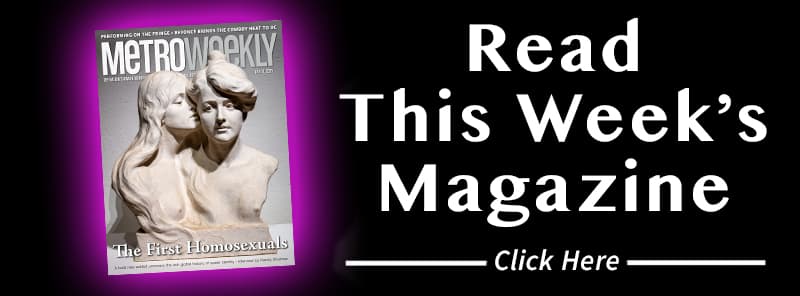
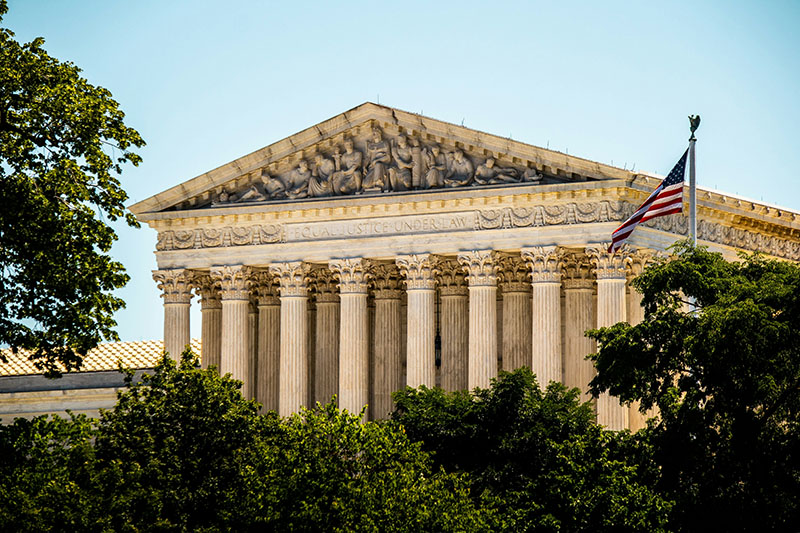

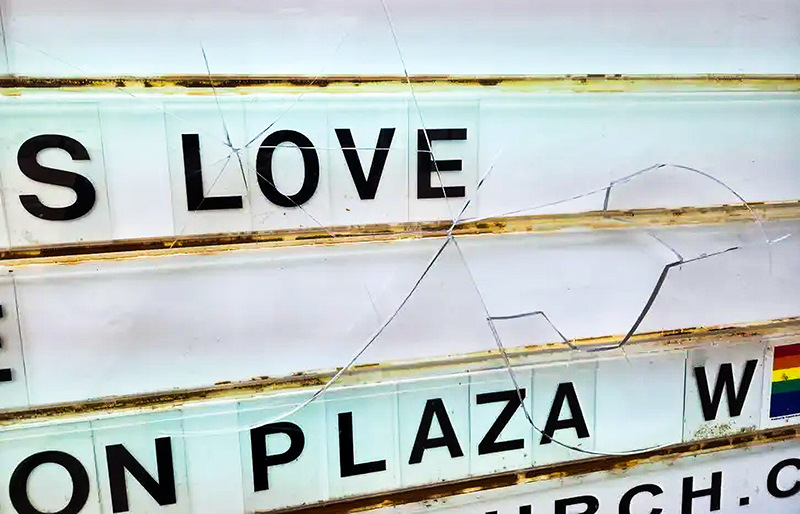













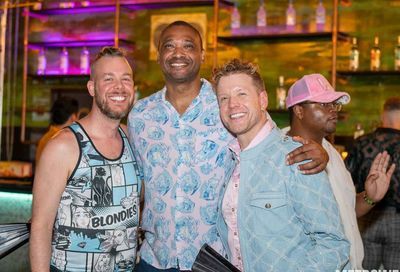
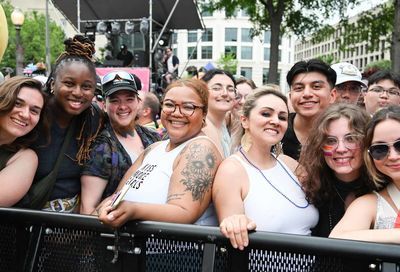
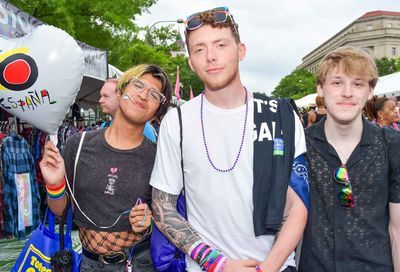
You must be logged in to post a comment.